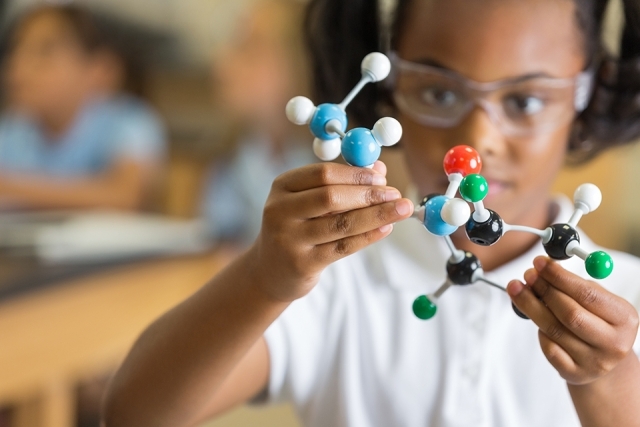
St. John’s University is striving to fill a critical, national need for teachers of science, technology, engineering, and mathematics (STEM) in K–12 public schools with a $1.2 million grant it recently received from the National Science Foundation (NSF).
The NSF’s Robert Noyce Teacher Scholarship Program provides funding to institutions of higher education to offer scholarships, stipends, and programmatic support to recruit and prepare STEM majors, as well as professionals who are making career changes, to become teachers with strong content knowledge within these academic areas. The teachers will be prepared to work in school districts with high needs.
High need refers to a school district serving elementary or secondary students that meet criteria which includes a sizable percentage of students from families with incomes below the poverty line; a high turnover rate among teachers; and a significant percentage of high school educators who are not teaching in the content area in which they were originally trained.
“Our goal is to provide stewardship for St. John’s University students by supporting them in promoting and motivating K–12 students in STEM, specifically those from low-income families, so that they, in turn, have the tools to become STEM role models in their own communities,” said Daniel Ness, Ph.D., St. John’s principal investigator for the Noyce grant, and Professor of Science, Technology, Engineering, the Arts, and Mathematics (STEAM) Education, Department of Curriculum and Instruction, The School of Education.
In addition to The School of Education, the Noyce grant was awarded to St. John’s College of Liberal Arts and Sciences to establish the St. John’s University Robert Noyce Spatial Thinking Academy for Preparing Effective K–12 STEM Teachers. Through the academy, the program will guide, coach, and retain individuals from culturally diverse backgrounds in STEM education; increase future teachers’ understanding of the context in which STEM learning occurs in formal and informal settings; and increase the capacity of highly qualified STEM educators to advance the learning of STEM concepts by reinforcing them with spatial thinking or spatial cognition skills.
“Spatial cognition refers to one’s ability to perceive, recognize, or conceptualize ideas or natural objects in terms of their positions or locations in static and dynamic systems,” Dr. Ness said.
The Noyce program at St. John’s includes partnerships with high-need school districts in the New York City metropolitan area, including those in Yonkers, the New York School District, and School District 31 in Staten Island.
The academy will be officially launched in February with a workshop on spatial thinking as it relates to STEM disciplines. A second workshop will follow in April with researchers from the City University of New York who specialize in spatial thinking in science.
“We are also starting our recruitment efforts so that we can fund Noyce scholars and stipend recipients (NSF terms for, respectively, undergraduate and graduate students) for the Fall 2023 semester,” said Dr. Ness.
The academy at St. John’s will initially consider student candidates from two pathways. Pathway one is for those enrolled in five-year programs leading to a baccalaureate degree in a STEM discipline in their fourth year and a master’s degree in Adolescent or Childhood Education in the fifth year that leads to certification by the New York State Education Department. Pathway two is for recent STEM graduates who return to graduate school to pursue the same master’s degree stipulated in the first pathway; it also leads to teacher certification in New York State.
“Our hope,” Dr. Ness said, “is that the services of our scholars and stipend recipients as teachers and role models will empower their students in these high-need districts by encouraging them to, in turn, give back to their communities either as STEM professionals or STEM teachers.”
